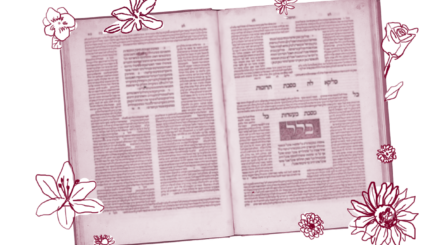By this point in Tractate Avodah Zarah, it has been well-established that the rabbis were concerned that wine handled by non-Jews may have been used for idolatrous purposes and is therefore prohibited to Jews. But should this always be the case? Are there no cases where a non-Jew might touch wine in a manner that does not arouse suspicion? And should it matter if there were?
Today’s daf explores two such examples. Here’s the first:
There was a certain etrog that fell into a barrel of wine. A gentile jumped up to take it out.
Rav Ashi said to them: Hold his hand still, so that he does not stir, and tip (the barrel) until it’s drained.
An etrog falls into a barrel of wine and a non-Jew instinctively responds by jumping in to save the etrog (or perhaps the wine) from being ruined. Rav Ashi also responds quickly, instructing those standing nearby to hold the non-Jew’s hand to prevent him from stirring the wine and to pour off the wine that may have come into contact with his hand. The implication is that only the wine near to the hand is prohibited, but if the non-Jew’s actions had led to the mixing of the wine, the entire barrel would be forbidden. By quickly immobilizing the hand, some of the wine can be saved and remain permitted for use by Jews.
The second case is as follows:
There was a certain barrel of wine from which the stopper had been removed (and the wine was spilling out). A gentile came, jumped up, and placed his hand (on the hole).
Rav Pappa said: Any wine that is adjacent to the stopper is prohibited, but the other wine is permitted.
There are those who say that Rav Pappa said: The wine until the stopper (i.e., in the upper portion of the barrel) is prohibited, but the other wine is permitted.
In this case, the cork that covers the hole in the side of a barrel of wine pops out and the wine begins to spill. A non-Jew jumps up to help and places their hand over the hole. Like his colleague in the previous case, Rav Pappa forbids the wine that comes into contact with non-Jew’s hand and permits the rest.
Rav Pappa’s original formulation is hard to put into practice. How can we separate out the wine that touched the hand from the wine that did not? Not so easily. A second tradition is similar to the case above — the wine above the hole is prohibited, but the wine below is permitted.
Had they wanted to, Rav Ashi and Rav Pappa could have chosen to rule leniently and permit the wine. After all, the non-Jews made contact with the wine to help save it and not to use it for ritual purposes. However, as we have seen through the tractate, the impulse to keep a substantial distance from idolatry is strong, one that cannot be legally ignored. At the same time, they could have ruled strictly and forbidden the entire barrel. But each chose a middle path, perhaps in an effort to save what wine (and financial loss) they could. To do so, they make use of the rabbinic understanding of the physics of liquids and how the contamination that comes from contact with idolaters spreads within them.
Read all of Avodah Zarah 59 on Sefaria.
This piece originally appeared in a My Jewish Learning Daf Yomi email newsletter sent on August 16, 2025. If you are interested in receiving the newsletter, sign up here.
With your help, My Jewish Learning can provide endless opportunities for learning, connection and discovery.



